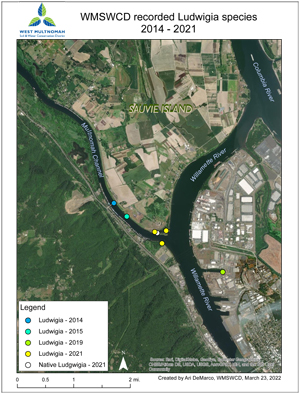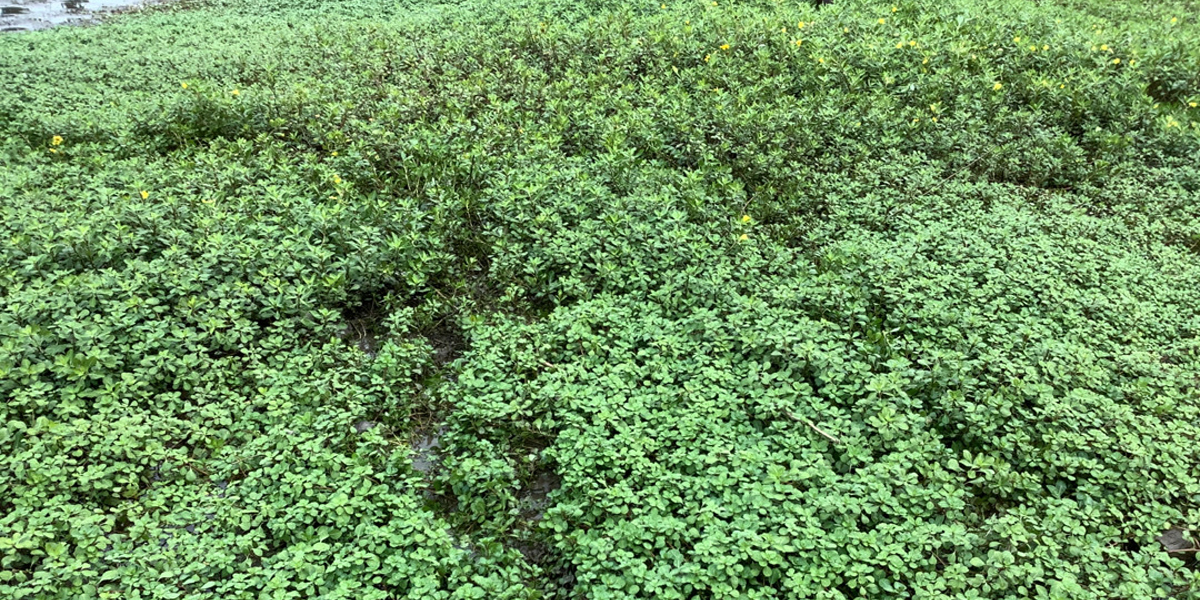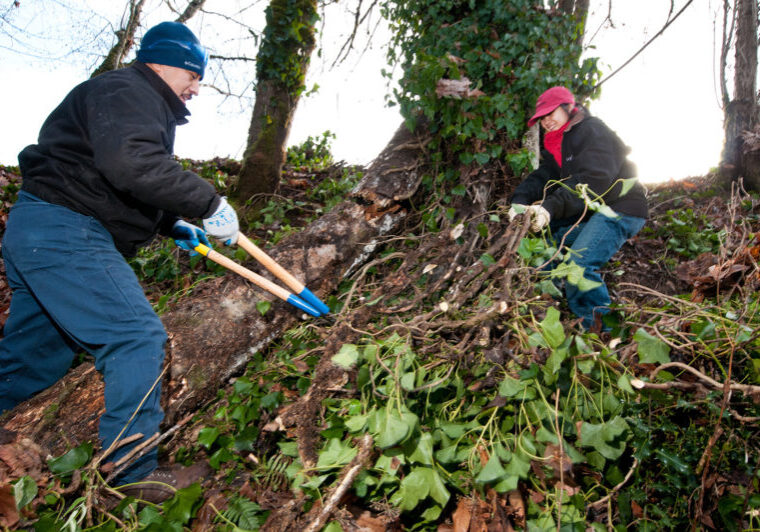If you’re boating around Portland’s rivers, you may see one of the Ludwigia aquatic plant species that live here. There is one native species (Ludwigia palustris) and two non-native species (Ludwigia peploides and Ludwigia hexapetala), also known as water primrose, all of which look fairly similar. Non-native Ludwigia species are on our “Early Detection and Rapid Response” list as a high priority species for control and recently we have encountered a few detections of the two unwanted species within the Sauvie Island, Multnomah confluence area west of the Willamette River.

Ludwigia roots underwater and can form mats over the surface of open water, outcompeting native vegetation, slowing water flow, and raising water temperatures. If allowed to spread, the mats can be very extensive and dense, drastically altering and narrowing waterways, and affecting the wildlife that needs those areas to survive.
In Portland, Ludwigia peploides and L. hexapetala can be found in abundance in North Portland, in the Columbia Slough and Smith & Bybee Wetlands, where land managers have been working for several years to control these infestations.
For several years within our district boundaries, our annual boat surveys only turned up incidental populations. For example, in 2014, we found and managed a very small patch of Ludwigia in the Multnomah Channel near the southern end of Sauvie Island. Last year we found a more significant infestation (see yellow dots on the map).

While invasive Ludwigia is more prevalent in the upper Willamette River (near Corvallis), prior to 2014 it hadn’t previously been found in the lower Willamette River, where it flows through Portland. We are working hard to keep this invasive aquatic plant from entering the Columbia River. We recently applied for additional funding from Oregon Department of Agriculture, Priority Noxious Weed grant program to expand survey and management work in the greater Willamette-Columbia River Confluence area. This grant will allow us to better address these new patches.
How to manage invasive species is a topic that conservation organizations across our area are regularly discussing at regional meetings. We learn from each other’s work, experiment with treatment methods, and try to consider all the ecological benefits and risks of weed control work. Since Ludwigia grows in water, it can be difficult to access and control. Land managers make informed decisions about the best ways to engage with the non-native populations of Ludwigia and their effects on habitat resiliency and water quality.
New populations of the non-native species are likely to occur on sandbars and mud flats where plant fragments can wash ashore and take root. One of the most important actions that residents can take is report any suspected Ludwigia species to the Oregon Invasive Species Hotline. Since the native species looks so similar to the two non-native species, correct identification by an expert is vital before anyone tries to remove it! And the non-native species are generally difficult to thoroughly remove on one’s own.
Ludwigia reproduces through seeds and through plant fragments that travel by water. Therefore, it’s important to always clean your boots, boats, and other gear after you leave a waterway or natural area, to help prevent spreading any invasive plant or animal species.



